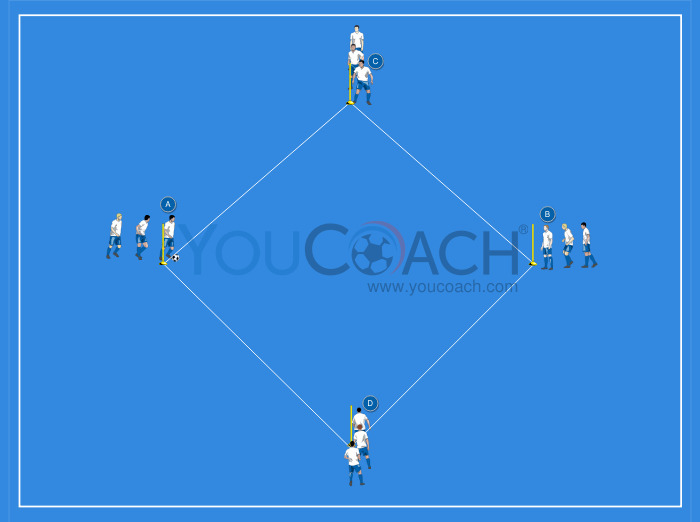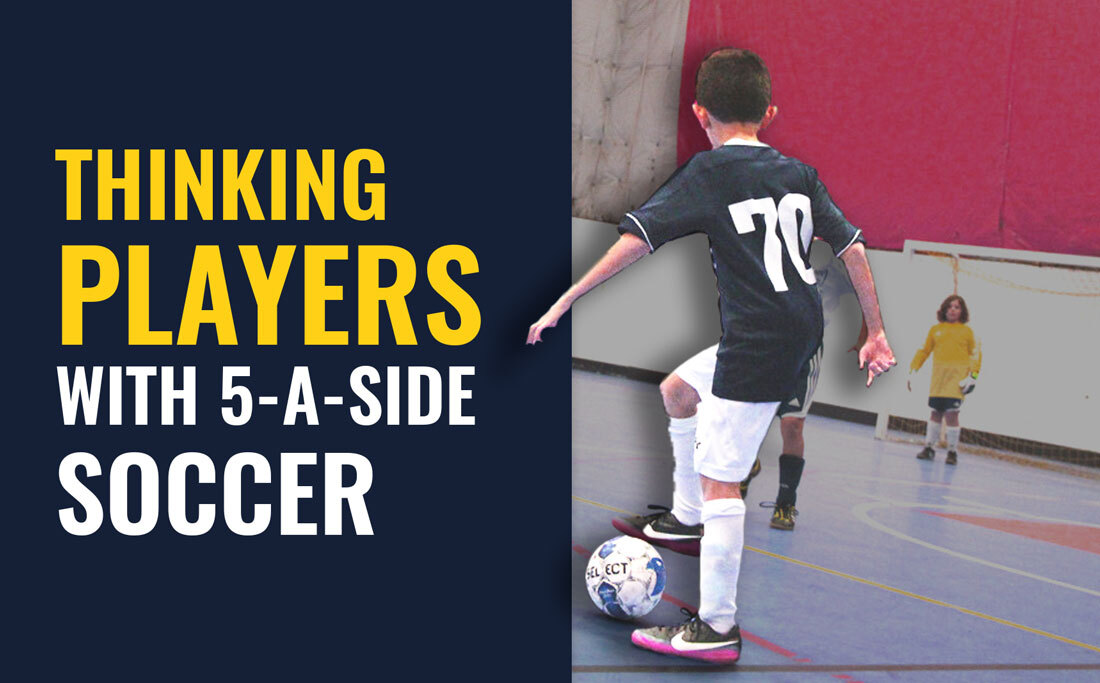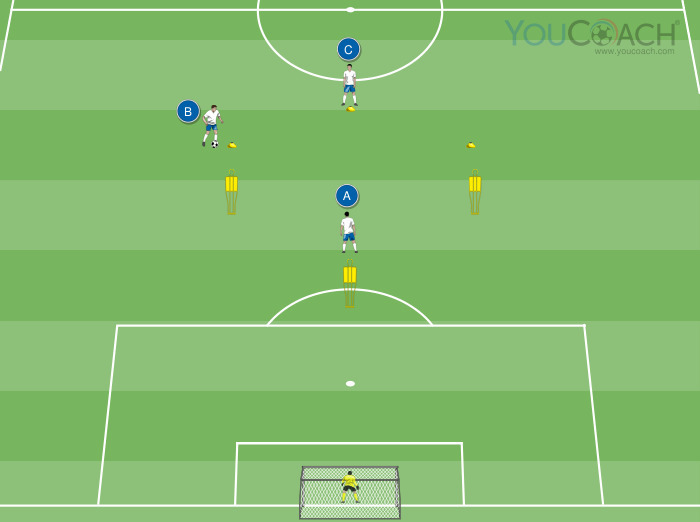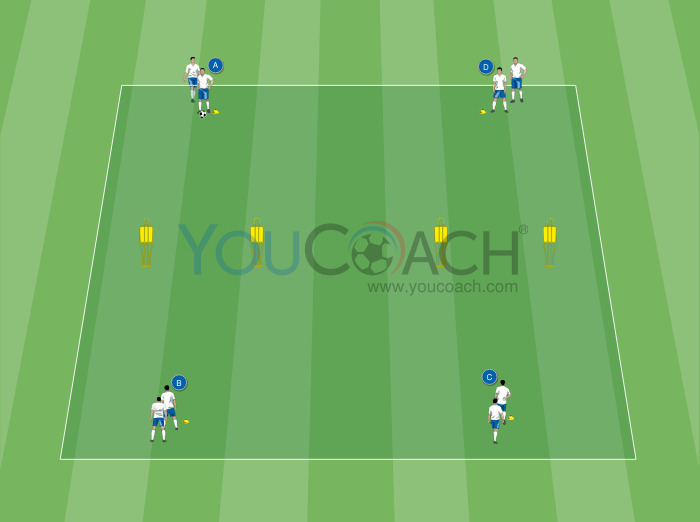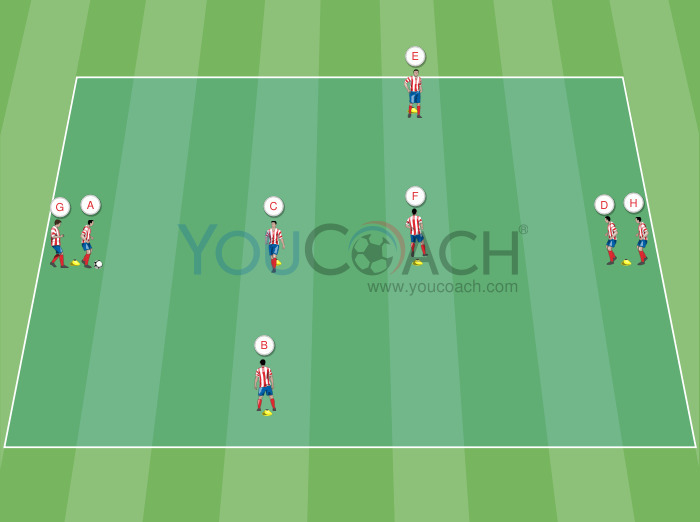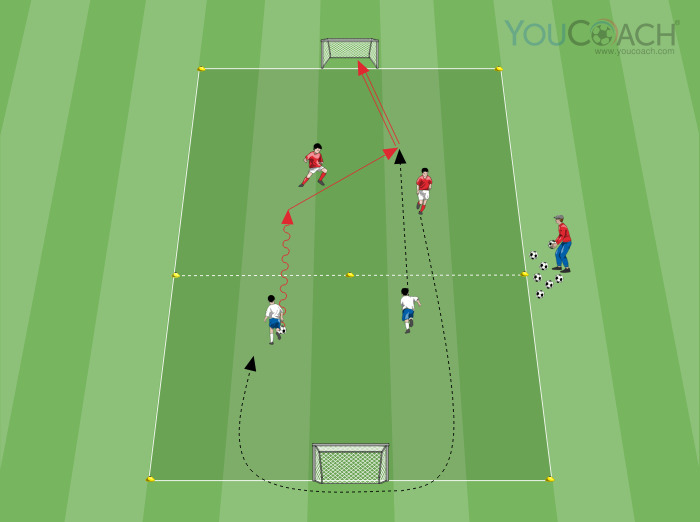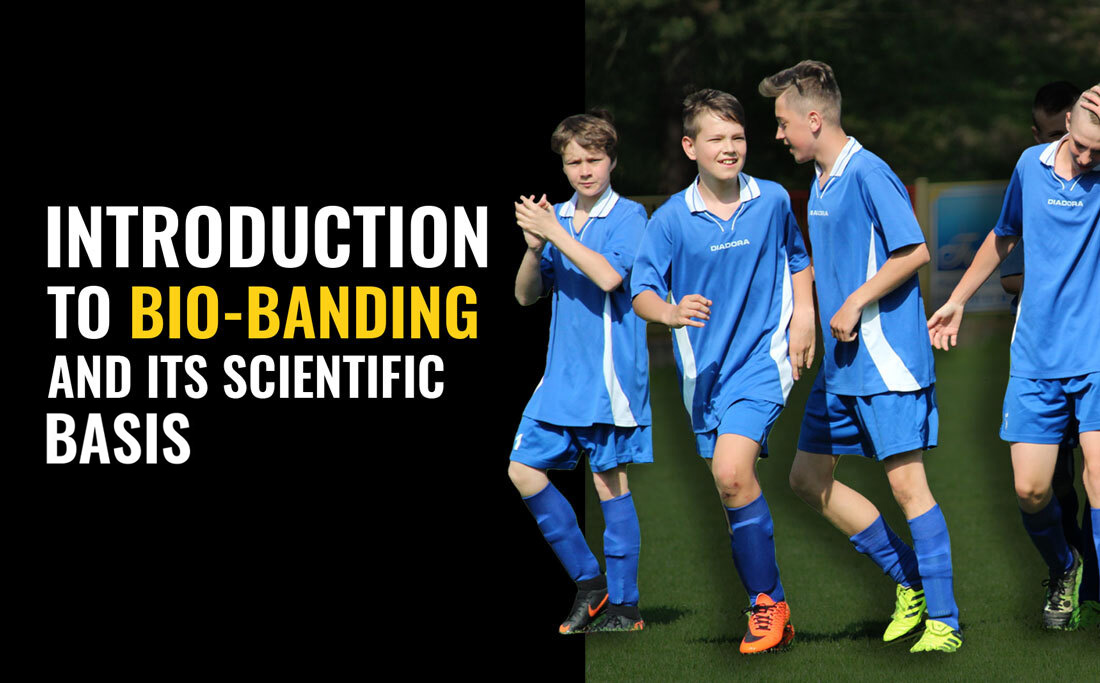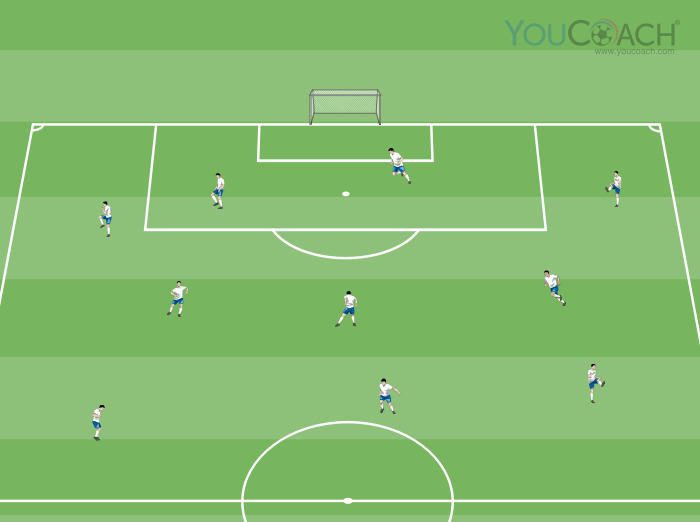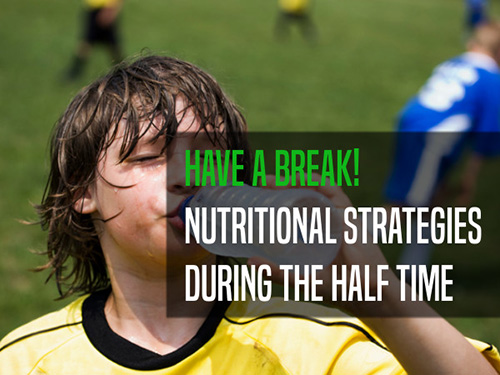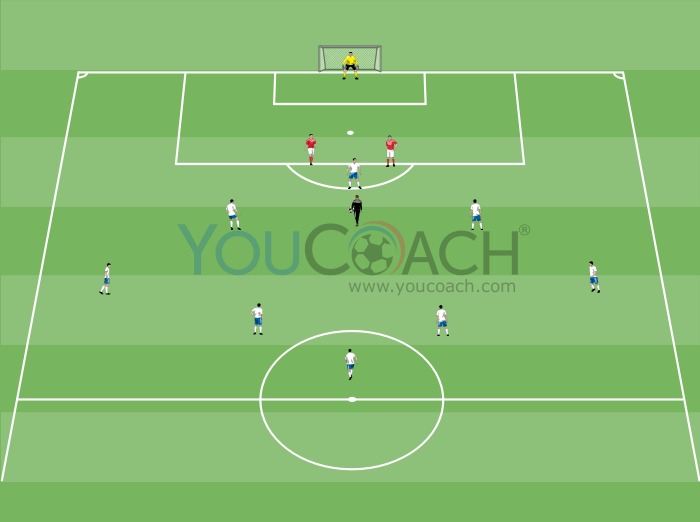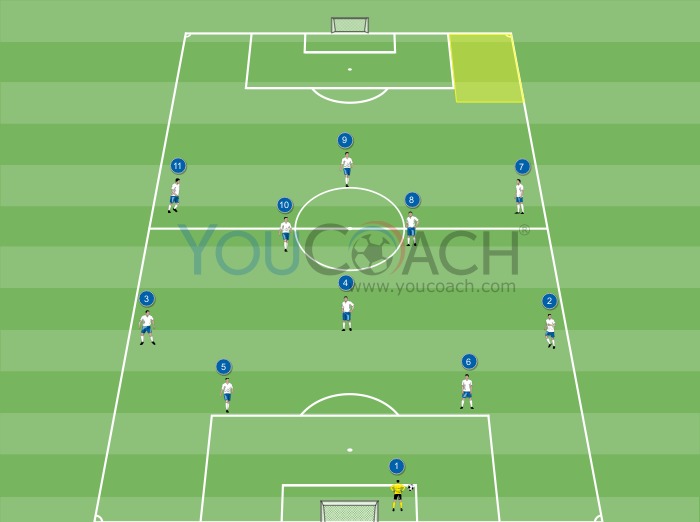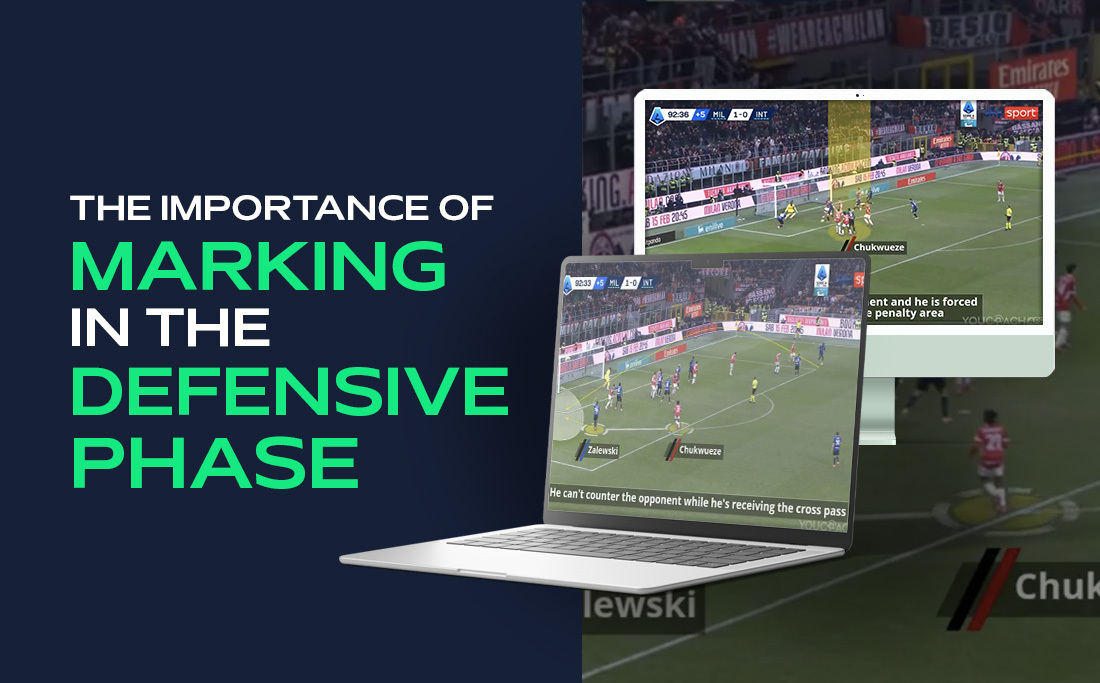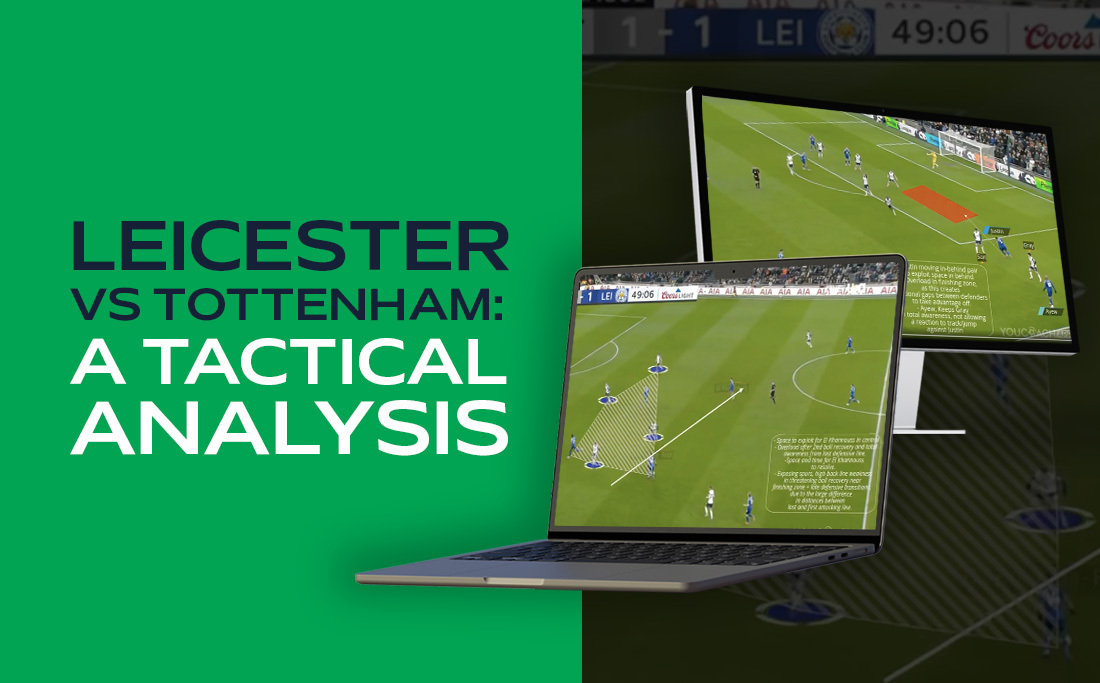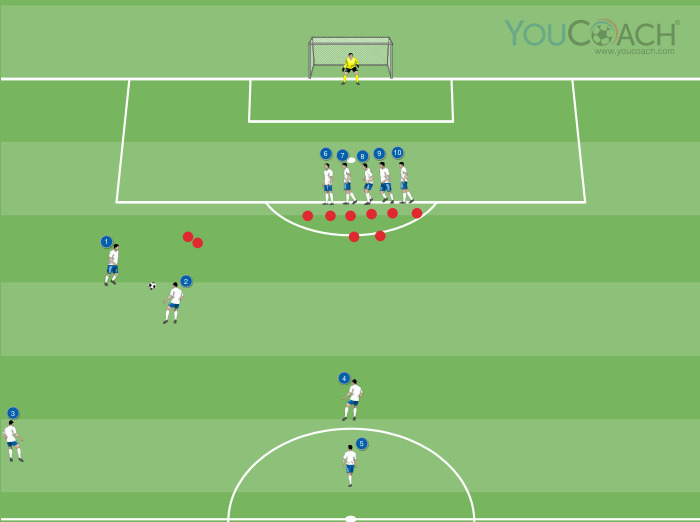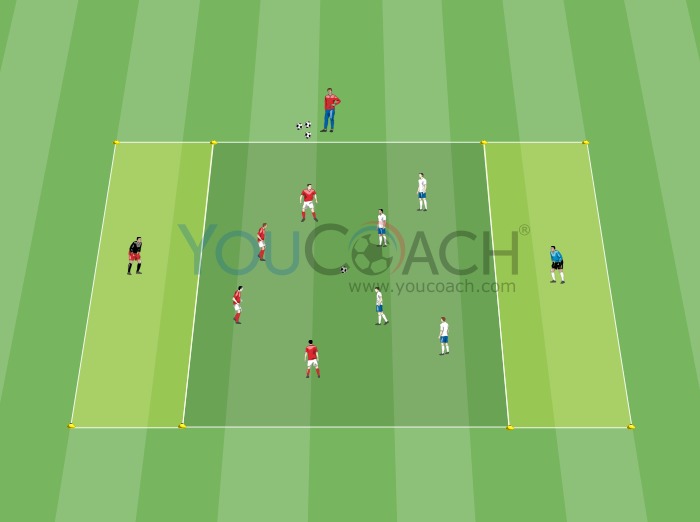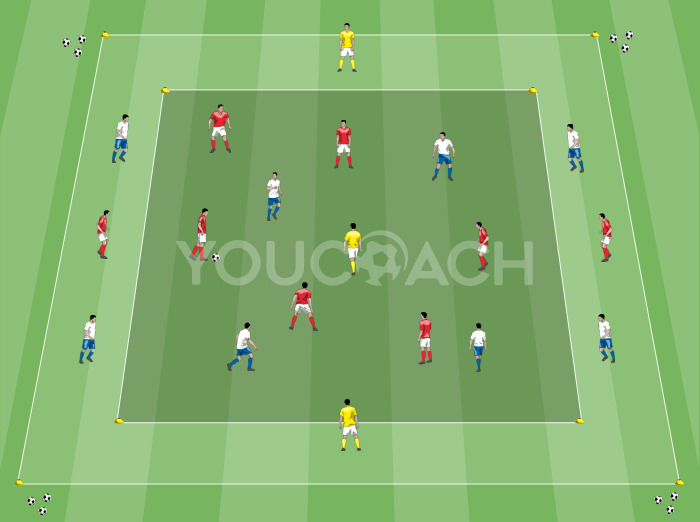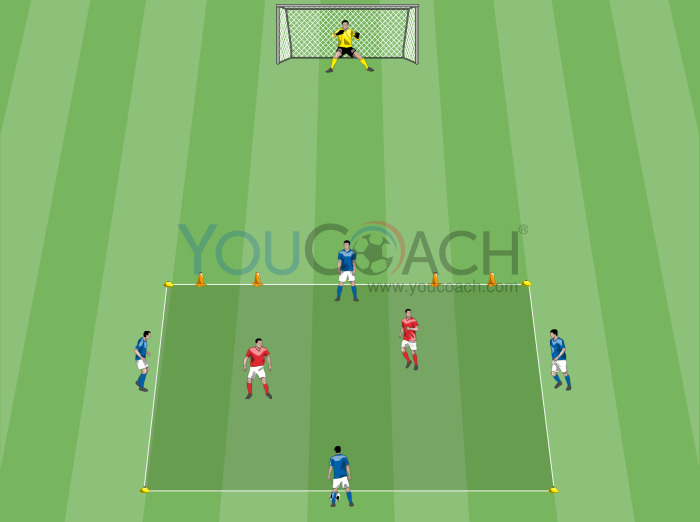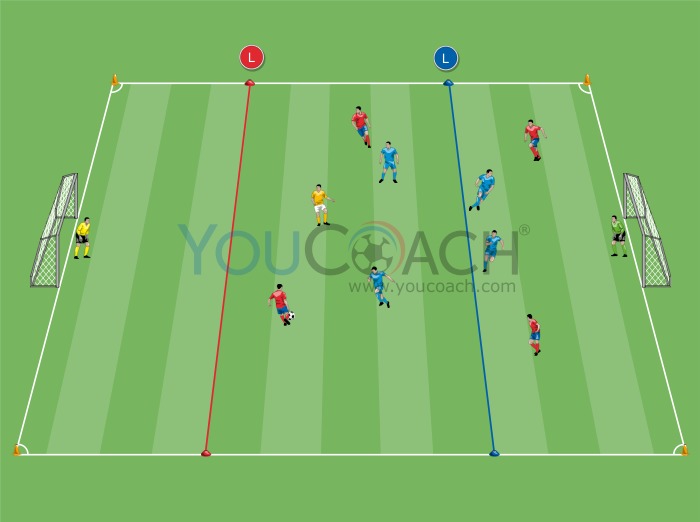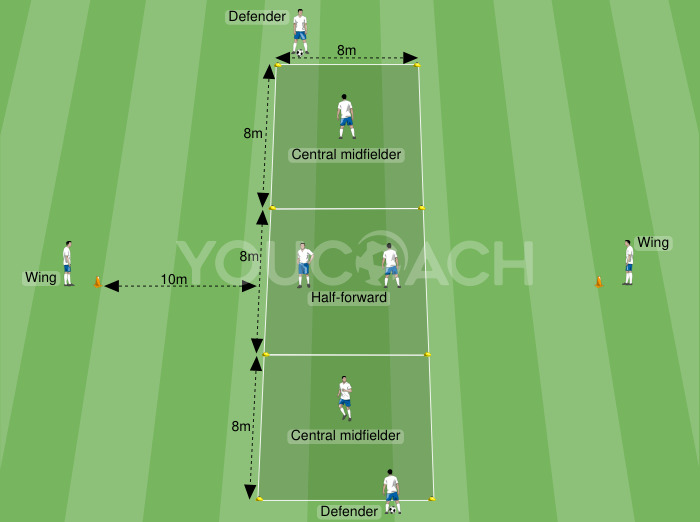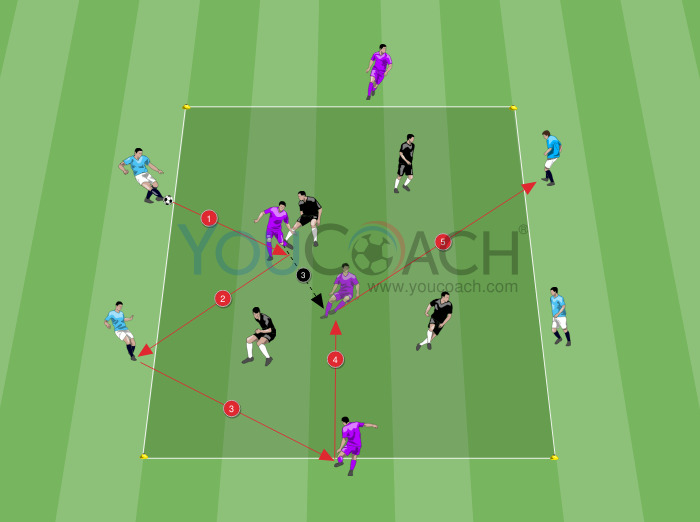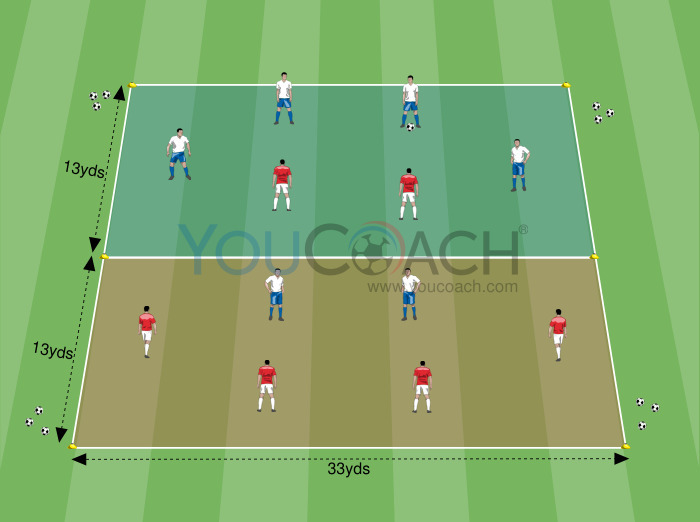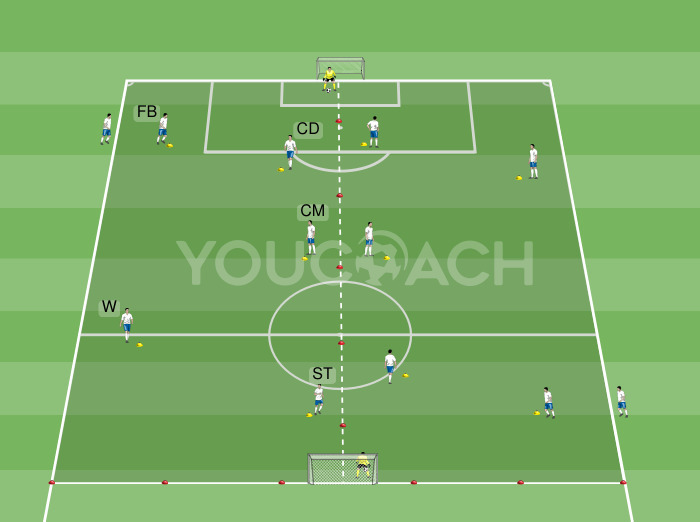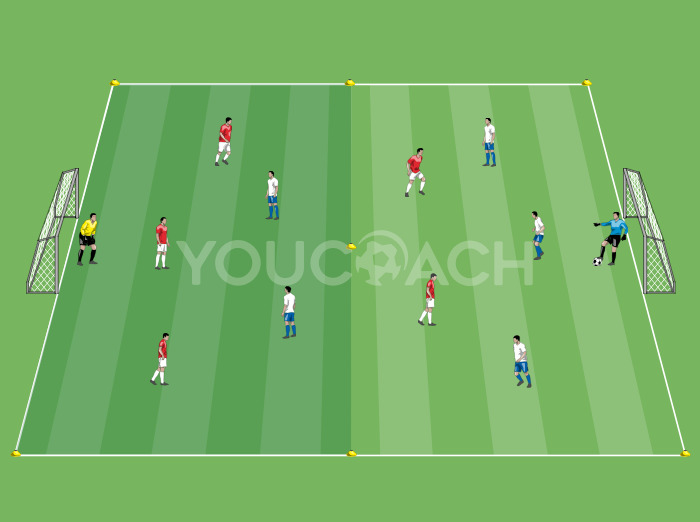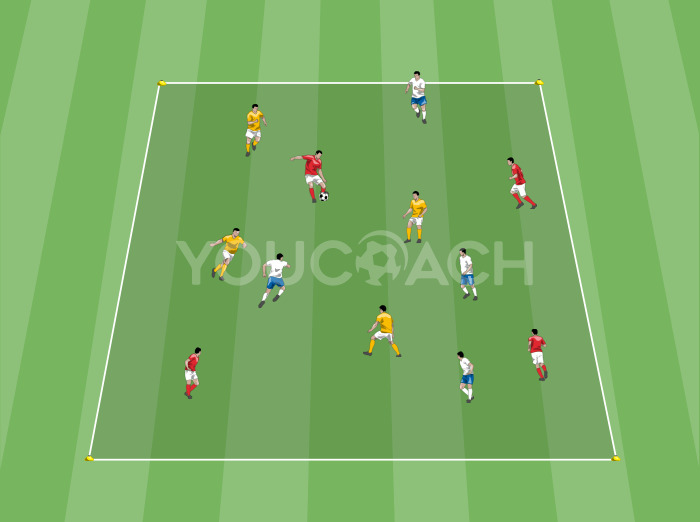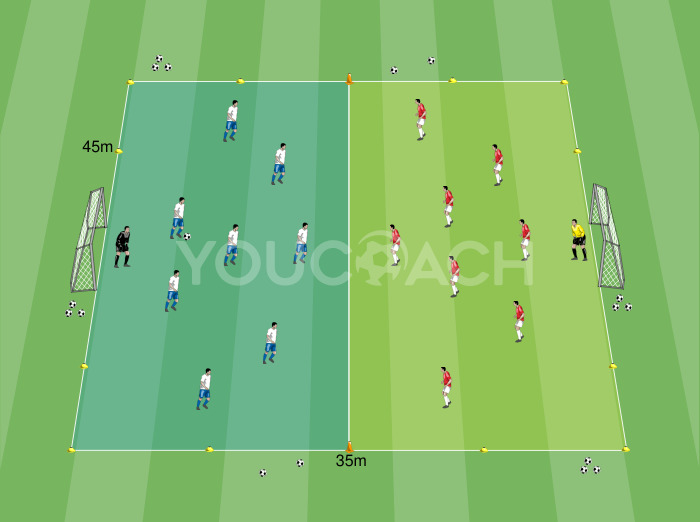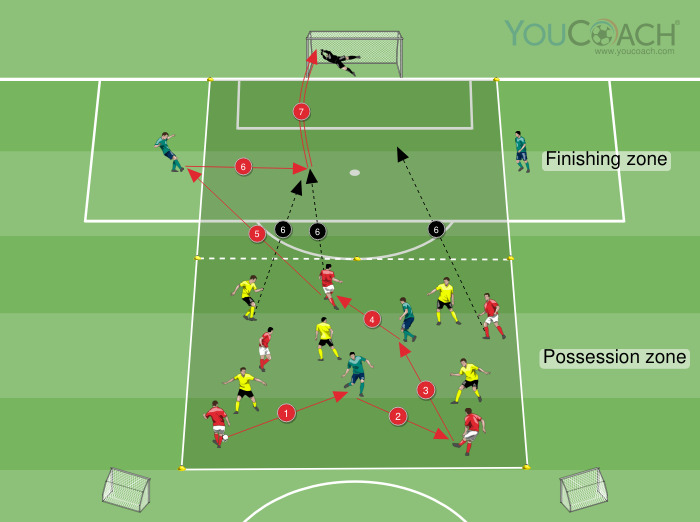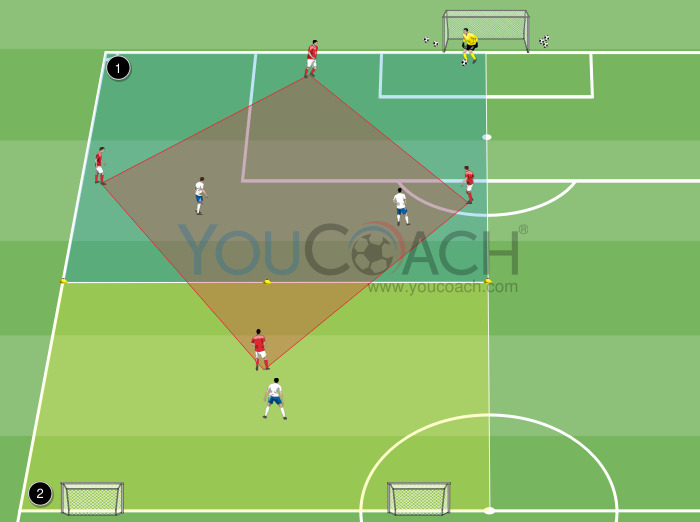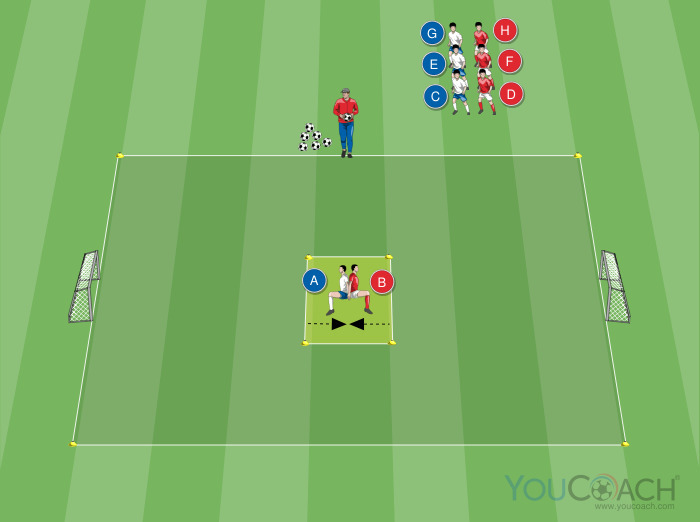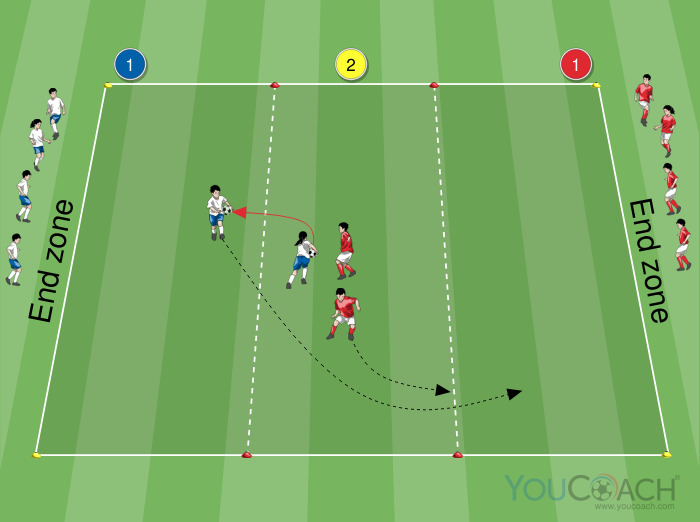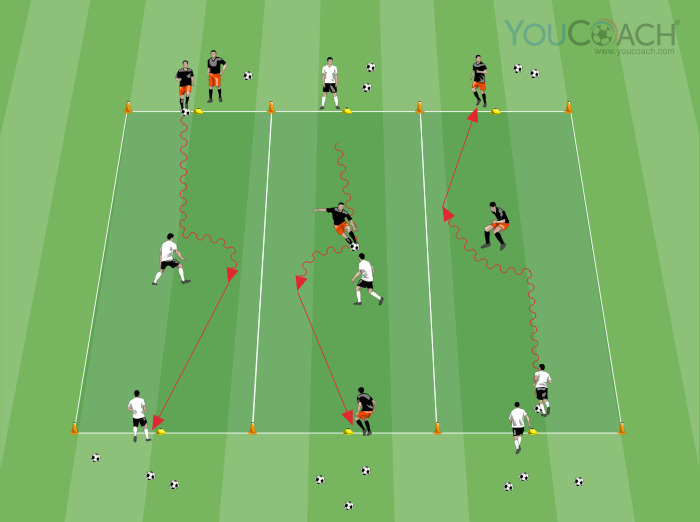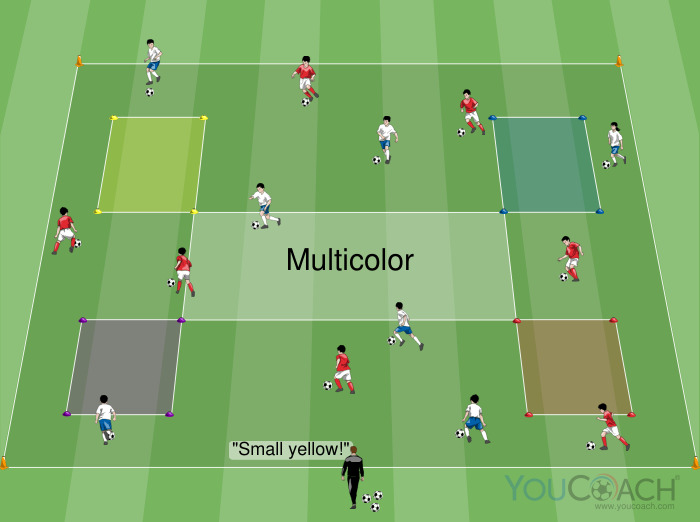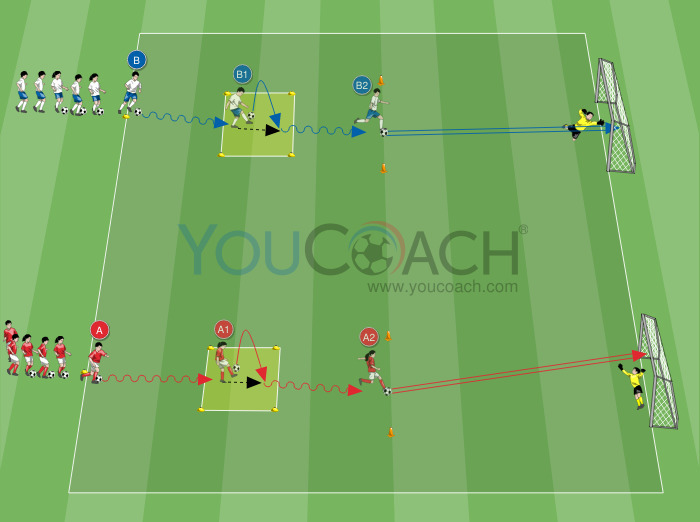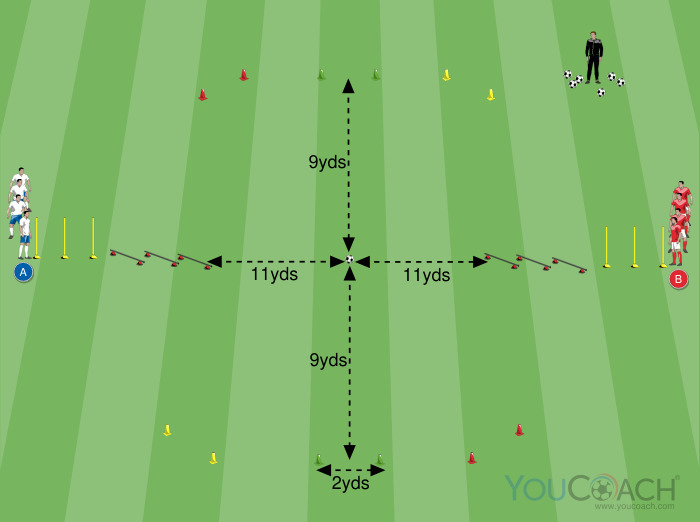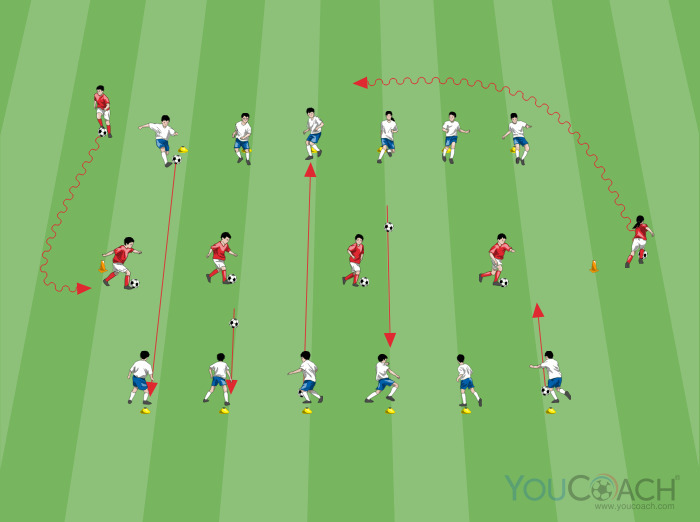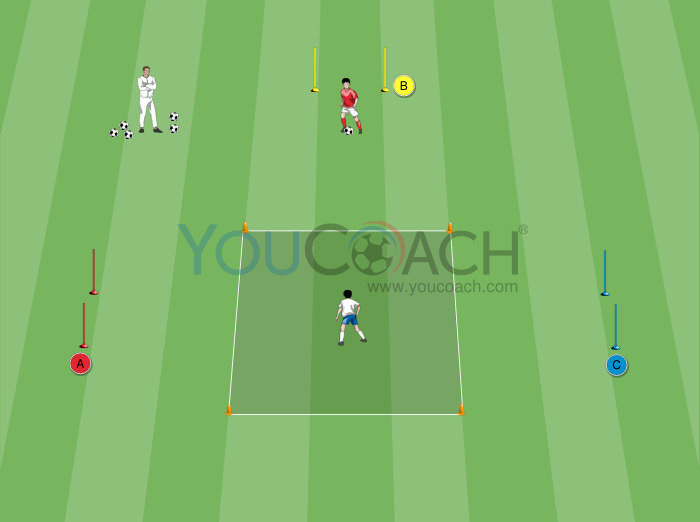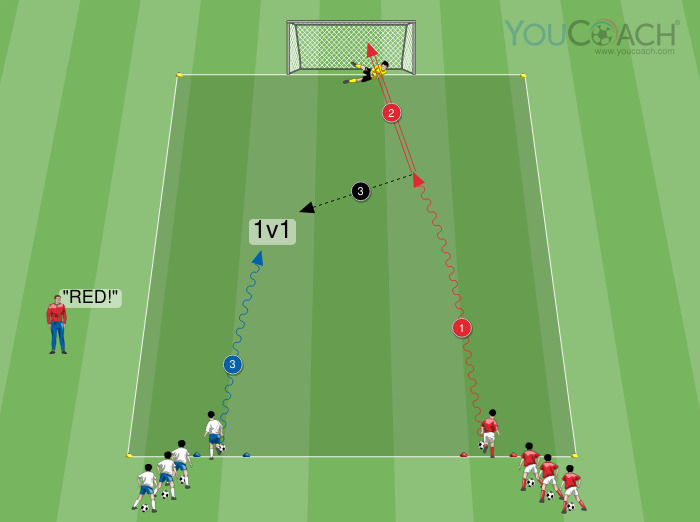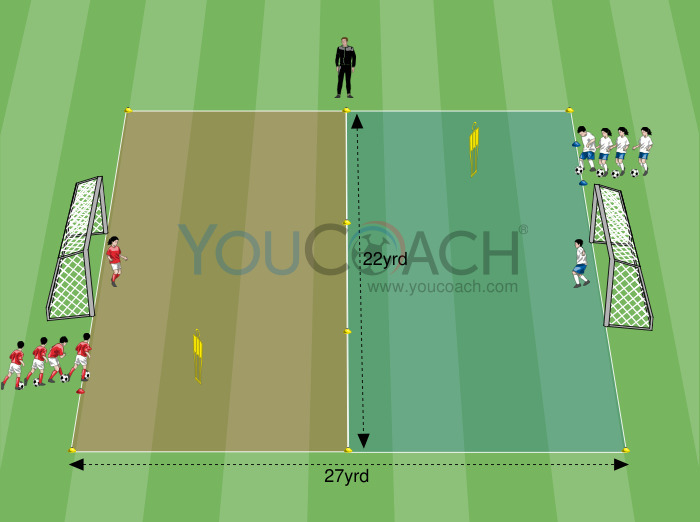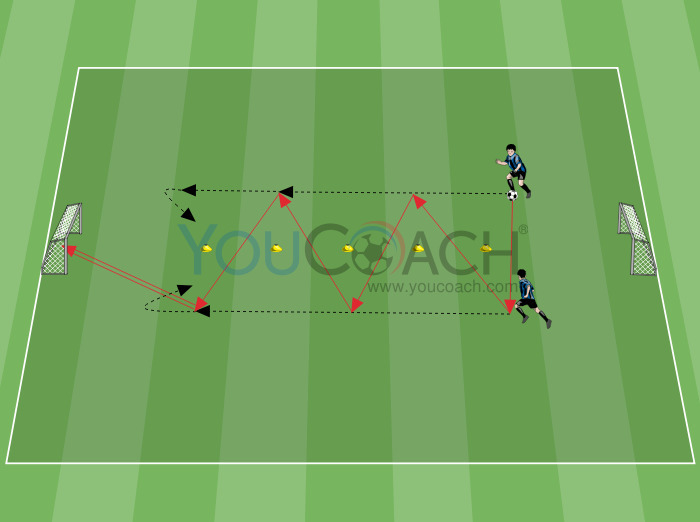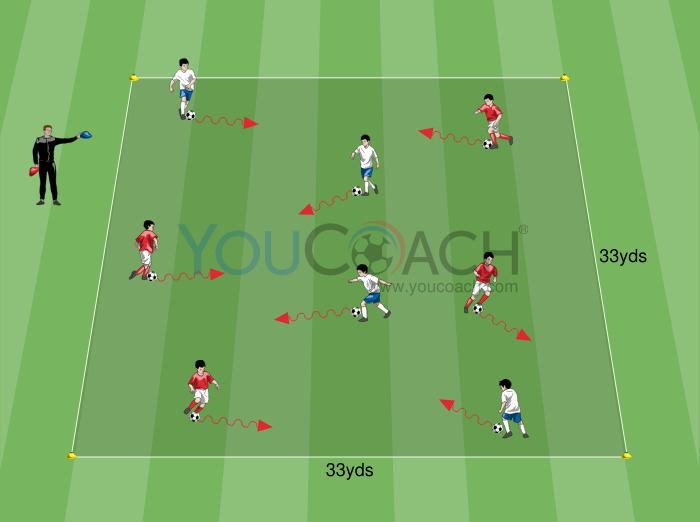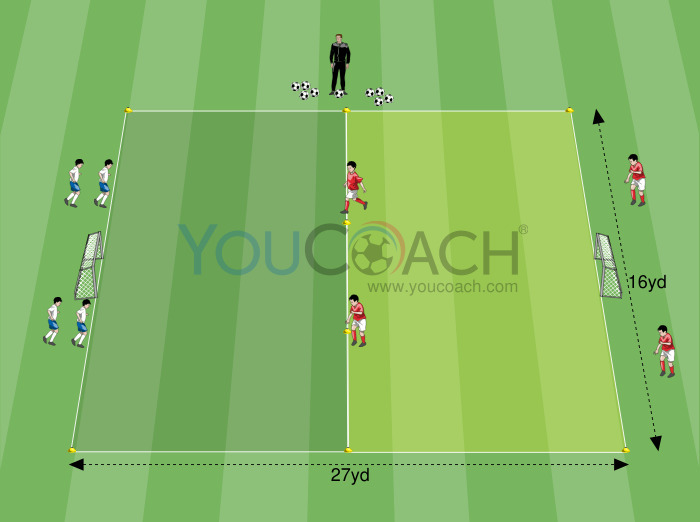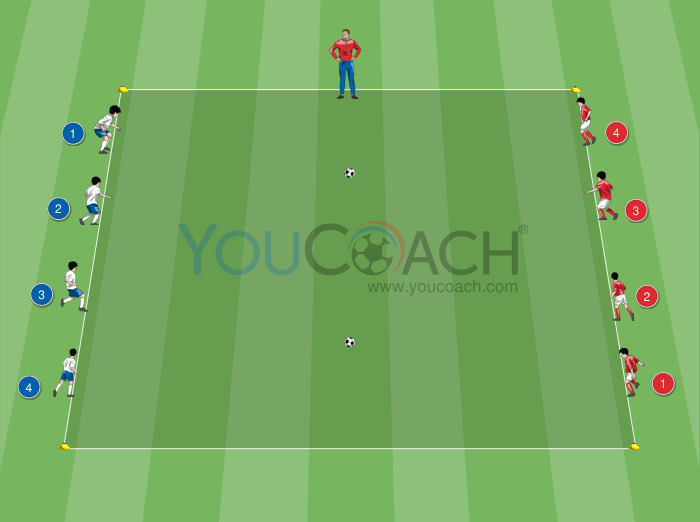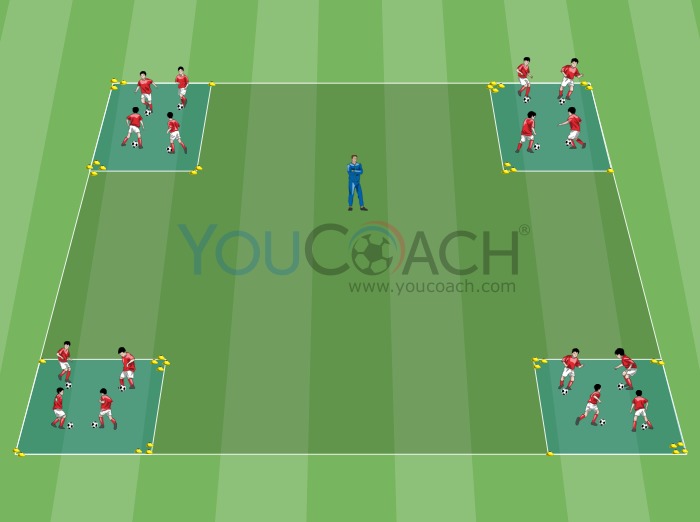Regain possession of the ball and counter attack
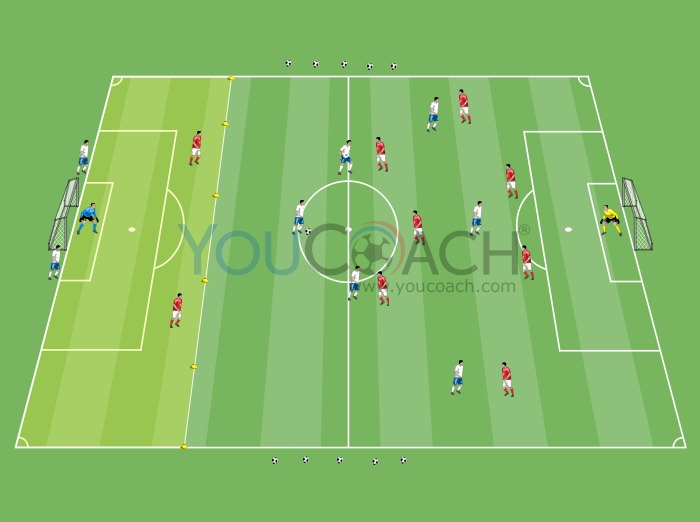
- Markers
- 9 vests
- Balls
- 2 goals
- Playing area: whole field
- Players: 17 + 2 goalkeepers
- Duration: 22 minutes
- Series: 2 10-minute halves with a 2-minute interval in between
| Summary | Secondary Objectives |
|---|---|
|
Themed match on regulatory field that trains ball possession, ball recovery and immediate restart with final 2 v 2 situation |
Speed of play, Transition, Counter attacking, Pressing, 2v2, Passing, Receiving, Shooting, 1v1 attacking, Intercepting, 4-3-3, First touch, Feints and tricks, Pass, Finishing, Intercepting, 2 versus 2, 4-3-3, Preventative coverages, Ball possession, Restart, Once the ball is lost - Attack the ball, Pressing, Transitions |
About 10 meters/11 yards outside a penalty area place a horizontal line of markers along the entire width of the field. We thus create a horizontal strip about 60x25 meters/65x27 yds near a goal line called the “finishing zone“ (yellow area in the picture). Divide the players into two teams (red team of nine versus white team of eight). The red team lines up in the larger portion of the field, defending the opposite regulatory goal, seven players with a 4-3 line-up. The remaining two red players (forwards) position themselves in the “finishing zone“. The white team deploys six players in the larger portion of the field with a 3-3 line-up; the remaining two players (defenders) position themselves on either side of the goal in the “finishing zone“. The two goalkeepers defend the two goals. Outside the larger area of the field, on the sides, near both side lines place some balls.
- White players start in possession of the ball
- Red players defend the goal. The aim is to retrieve the ball to play it to the attackers in the "finishing zone" (positive transition)
- Both teams simulate the tactical line-up of 4-3-3
- If the red players can intercept the ball, they will try to pass it to the two attackers in the yellow zone. Leave, at least in the initial part of the drill, the two red forwards free to make the first ball control i.e., to receive without immediate opposing pressure
- Upon receiving the ball by the attackers, the defenders quickly enter the field and a 2 v 2 situation is played in the "finishing zone"
- During the course of the 2 v 2, the white team must quickly recover on the sides a new ball and return to attack the goal defended by the red team. It may happen that on the second interception by the red team, the 2 v 2 in the yellow zone is not yet finished. In this case the red players will have to be good at delaying the action and maintaining possession of the ball until further play can be made to their attacking teammates ready to receive in the " finishing zone"
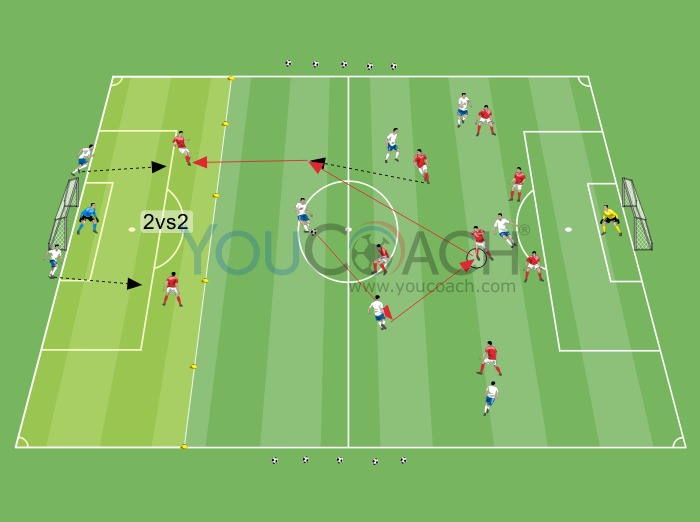
- The two forwards inside the "finishing zone" are free on the first control (they cannot be man-marked but must be left free to receive the verticalization of their teammates)
- Free ball touches available to players of both teams
- At the end of the first series reverse the arrangement of the two teams. Also change the positions of the two goalkeepers
- Limit the number of ball touches
- Upon ball control by the forwards in the "finishing zone", a red teammate can go in support to create a 3 v 2 situation in the yellow zone. This simultaneously gives a situation of numerical balance in the larger area of the field in transition. The player who has gone to support, cannot return to their own field zone until a goal has been scored
- The red team must be able to close off all passing lines and, once they win the ball, be able to quickly play it forward
- The white team in numerical inferiority must be good at moving without the ball, patiently trying to find the right opening to be able to go for the shot. Once the ball is lost, it must immediately attack the opponents so as not to allow them to restart with immediate verticalization on the two forwards in the "finishing zone"
- Also take care of the 2 v 2 situation in all its aspects. For defenders: individual and group defensive tactics. For forwards: resourcefulness, imagination, mobility and collaboration


